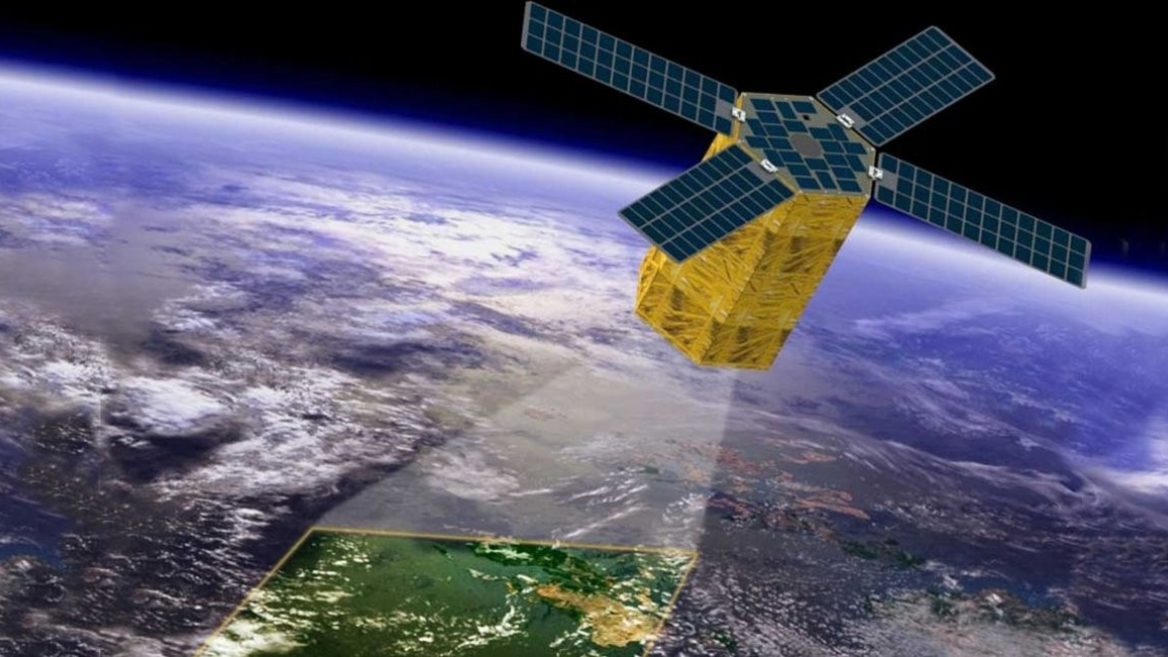
The company of Ukrainian Max Polyakov launched the first satellite of the world’s first agro-oriented EOSDA constellation
EOS Data Analytics launched EOS SAT-1, the first satellite of its EOS SAT constellation, on January 3, 2023.
On January 4, 2023, EOS SAT-1, the first satellite of EOS SAT, the world’s first agriculture-focused satellite group, was successfully launched into low Earth orbit by a SpaceX Falcon 9 rocket from the US Space Force Base in Cape Canaveral, Florida. The satellite made contact and transmitted telemetry.
EOS SAT will have seven small optical satellites from EOS Data Analytics, a global provider of artificial intelligence-based satellite image analytics, to support the implementation of sustainable agriculture practices and ecological forestland monitoring by providing high-quality data for analysis.
The EOS SAT-1 satellite is an in-house development of companies that are part of the Noosphere of the international IT and space technology entrepreneur Max Polyakov. The operational process of the full cycle is established through the vertical integration of companies in the Noosphere ecosystem — EOS Data Analytics, Dragonfly Aerospace, SETS, Flight Control Propulsion.
The device was built and equipped with two high-precision DragonEye cameras of the Ukrainian-South African space optics manufacturer Dragonfly Aerospace, the satellite engine was developed by the Ukrainian company SETS (Space Electric Thruster Systems), and the Flight Control Propulsion company provided 3D printing of parts and the manufacture of body elements. EOSDA, as a global provider of satellite analytics, will receive images from the satellite for further processing and provide its customers with high-quality data for making informed decisions in the agricultural sector.
Once fully operational by 2025, EOS SAT will cover up to 100% of the countries with the largest agricultural land and forest area, accounting for 98.5% of such land on the entire planet.
EOS SAT will help agribusinesses monitor crop growth and detect heat, cold, water shortages, weed spread, pest attacks and other issues that threaten crops. Companies will also be able to optimize resource use based on productivity and vegetation maps provided by satellite arrays, test the effectiveness of new crop protection products or fertilizers, manage irrigation, estimate yields, eliminate redundant field inspections, thus reducing fuel use, and much more.
EOS SAT-1 monitors up to one million square kilometers daily using 11 agro-oriented bands. Even with just one such satellite in the sky, EOSDA customers are opening up the potential to implement precision farming methods and, consequently, reduce CO2 emissions, lower energy and water consumption, and more.
“This launch creates revolutionary new opportunities for the application of satellite technologies for the agricultural industry. EOSDA will now work with its own data sets to provide even deeper and more accurate analytics for its customers and partners,” adds Artem Anisimov, CEO at EOS Data Analytics.
By 2025, the group will monitor areas of up to 12 million square kilometers daily. Its satellite cameras will produce panchromatic and multispectral images using 13 agriculture-oriented bands to provide specific information on important characteristics of the monitored lands.
“We are pleased to be a technology partner for EOS SAT, the first commercial group created specifically for the needs of agriculture. The demand for high-performance, compact and lightweight satellites continues to grow every year, providing an excellent market for our imaging products. At the same time, it’s great to have a client with such a clear focus on solving problems that are key to sustaining life on the planet. With a suite of agriculture-focused sensors, EOS SAT will collect data that can really help managers care for the Earth and maintain its biodiversity, while ensuring food security for many people,” comments Brian Dean, CEO and co-founder of Dragonfly Aerospace.
Today, most competing companies are forced to work with data provided by third-party satellites, which makes them dependent on the quality of satellite sensors, sampling frequency and other parameters that are beyond their control. Focused specifically on the needs of the agricultural industry, EOS SAT will provide unprecedented amounts of data for EOSDA as often and in detail as the company’s customers require.
To solve the problems of existing satellites, such as low sensor resolution, limited spectral capacity and poor performance in cloudy weather, the EOS SAT satellite cameras will capture images using 13 agriculture-related bands: RGB, 2-channel NIR, 3-channel RedEdge, WaterVapor, Aerosol, Pan and 2 SWIR channels. EOS SAT-1 will have 11 spectral bands, excluding the SWIR bands.
EOS SAT-2 and subsequent satellites are expected to enter orbit during 2023-2024. The achievement of the full operational potential of the EOS SAT group is planned for 2025.

